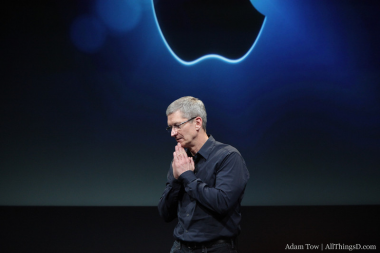After beginning in late 2007, the age of netbooks is coming to close. Acer and Asus, the two remaining top-tier manufacturers of the small laptops, are ceasing netbook production today, reports The Guardian’s Charles Arthur. For a computing market that appeared to have unstoppable growth early on, the rise and fall of netbooks happened quickly. It should remind us that disruptive new technologies can quickly erode a product’s market share, and even, the viability of a product class itself.
An example of this change can be seen in one of my most-read posts ever here on GigaOM. Out of more than 7,500 posts I’ve written, one of my most viewed is “A quick guide to netbooks” from September 2008. No matter what news was hitting the tech cycle, this post on netbooks kept finding its way in front of readers who searched for netbook information on the web. Even a year after publication, the post was appearing on a daily basis near the top of our stats. Then 2010 arrived, and with it, the first credible consumer tablet in Apple’s iPad.
Charles Arthur provides four reasons for the netbook’s demise, but by analyzing the stats of my netbook guide post, I suggest that the revamped tablet market was the beginning of the end for netbooks. True, these are completely different products in terms of form factor, design, operating systems and supported applications. But both share an important commonality: relatively inexpensive mobile computing devices.
Let’s face it: There are only a few reasons that netbooks even became a “thing.” You could get one for between $200 and $400, you could run the apps you wanted to, and you could take them everywhere. The idea of a small, cheap laptop that ran all the same software your larger notebook or desktop could run was appealing at a time when the global economy began a huge downturn. The timing of netbooks was simply right.
 I know because I bought the very first one available in 2007 and used it to cover the Consumer Electronics Show in 2008: All of my posts were written on a small Asus Eee PC. I later upgraded to an MSI Wind machine and then a $399 Toshiba model in 2009. For half the cost of a full-sized laptop, I had something more portable that lasted longer on a single battery charge.
I know because I bought the very first one available in 2007 and used it to cover the Consumer Electronics Show in 2008: All of my posts were written on a small Asus Eee PC. I later upgraded to an MSI Wind machine and then a $399 Toshiba model in 2009. For half the cost of a full-sized laptop, I had something more portable that lasted longer on a single battery charge.The idea of a netbook then morphed into a smartbook: A small laptop that ran not on Intel chips, but ARM chips used in smartphones. The concept was great, but with Apple’s iPad introduction in 2010, I immediately suggested that smartbooks were DOA; a point that Qualcomm confirmed nine months later.
Some current netbook owners will continue to cling to their device, mainly because it meets their needs of Microsoft Windows applications in a small laptop, and that’s fine: One should always use the best tool for the task at hand.
Our tasks, in terms of computing needs, however, have changed. Legacy application suites are getting replaced by a seemingly never-ending stream of smartphone and tablet applications. Cloud services for productivity and storage are the new Microsoft Office and hard drive. Touch computing is becoming the norm, not the exception, and mobile operating systems are optimized for it. Simply put: Netbooks are just another example of old-school computing and world is moving on. Farewell netbooks; it was fun while it lasted.
 I’d be remiss if I didn’t mention Google’s Chromebook initiative as it can appear on the surface that the company is continuing to offer a netbook experience: Low-cost, small laptops that run for hours at a time. There’s one key difference, however: The entire interface is a modern desktop browser that works as a jack-of-all-trades for creating and consuming web content. Best of all, the simplicity of the software brings all the benefits of the web without the distractions, upkeep or power-consuming features brought by a legacy desktop environment.
I’d be remiss if I didn’t mention Google’s Chromebook initiative as it can appear on the surface that the company is continuing to offer a netbook experience: Low-cost, small laptops that run for hours at a time. There’s one key difference, however: The entire interface is a modern desktop browser that works as a jack-of-all-trades for creating and consuming web content. Best of all, the simplicity of the software brings all the benefits of the web without the distractions, upkeep or power-consuming features brought by a legacy desktop environment.That doesn’t mean I think Chromebooks will take over the world as netbooks were expected to do, but the different software approach and deep integration with Google services give Chromebooks a chance to survive beyond the age of netbooks.














